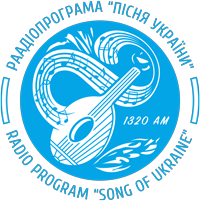Part 5: “… forcing people to prepare for eviction”.
Yuriy Shchur
Over the three years of the full-scale Russian-Ukrainian war (and in general, since the beginning of this war in 2014), hundreds of thousands of Ukrainians have left their homes. Many have gone abroad, but even more have remained within Ukraine, but have acquired a status unknown to them before – IDP (internally displaced person). Behind these three letters is the burning pain of loss and the boundless desire to return home… And if this status is something new for Ukraine, then the policy of the Russians (Soviet) to force Ukrainians to leave their native places has already taken place.
On August 12, 1949, the Council of Ministers of the Ukrainian SSR and the Central Committee of the Communist Party of the Soviet Union (Bolsheviks) adopted the Resolution “On the Resettlement of Collective Farm Farmers and Individual Farms from the Western Regions of Ukraine to the Southern Regions of the Ukrainian SSR”. The official reason was quite pragmatic: to improve the cultivation of large land areas in the southeastern regions, as well as to provide labor for industrial enterprises and planned large-scale construction projects. A “pleasant” bonus for the Soviet system was also the deprivation of the material base of the forces of the Ukrainian liberation movement – the underground of the OUN and the UPA departments.
First of all, it was planned to resettle residents of the Volyn, Drohobych, Lviv, Rivne, Ternopil, Stanislav (Ivano-Frankivsk) and Chernivtsi regions. Later, residents of the Chernihiv, Zhytomyr and Sumy regions were also to join them. All of them were directed to Kherson, Mykolaiv, Zaporizhia, Dnipropetrovsk, Izmail, Kharkiv, Odessa, Luhansk and Donetsk.
The planned numbers for the implementation of this Resolution were also quite tangible. Thus, in 1949, 2,600 families were to be resettled from Chernivtsi region, 2,500 from Rivne region, 1,000 from Ivano-Frankivsk region, 100 from Drohobych region, and 2,390 from Ternopil region.
The Soviet authorities, trying to give the whole campaign the appearance of “voluntariness”, widely involved various agitators in their work. The latter said that the resettlers could take with them any property they wished, including houses, which were dismantled and transported to a new place of residence (houses could also be obtained on site), as well as livestock and supplies. Livestock could be transported either personally or by renting it out, and similar ones could be obtained at the new location. In addition, the family was to receive a moving allowance: 700 rubles for the head of the family and 250 rubles for each family member. The move itself was free of charge. At the new location, it was possible to take out a loan of up to 5,000 rubles with repayments over 10 years. In addition, they were provided with a personal plot of land. Moreover, for a period of three years, the family was exempted from the need to pay state taxes and numerous deliveries (milk, eggs, meat), which were extremely difficult for the population of the western regions.
Despite these seemingly good conditions for changing their place of residence, panic prevailed among the population. Everyone still had fresh memories of the forced eviction of Ukrainian families to Siberia. Residents of Western Ukrainian regions wanted to share their experiences with their relatives and loved ones (scattered throughout the USSR) in the only way available at that time – through correspondence. However, in the Soviet Union there was no concept of privacy of a person’s personal life. Any letter could be checked for the presence of “inappropriate” information. Everything was carefully noted, summarized and quoted in reports addressed to the leadership of the special services and the Communist Party.
On September 26, 1949, the MGB reported to the Communist Party leadership that during the first week of the month, 127 letters had been intercepted from the Chernivtsi and Ternopil regions alone (89 from Chernivtsi and 38 from Ternopil), in which a negative assessment of the authorities’ resettlement measures was expressed.
The document contained the most characteristic expressions, that is, the most harmful in the vocabulary of the Chekists. What did potential victims write about the fact of forced eviction? In particular, the fact that no one wanted to leave voluntarily. And already understanding the inevitability of the decision made from above, the residents of the village of Mykhailivka, then Kelmenets district, decided to move to a new place all together, the whole village. However, it turned out, “that this is not possible. And now they are looking for reasons from each person to evict him. So now it is very difficult for the people. No one knows what will happen to them.”
The author of the letter from the village of Oshikhlyby, the same Kitsman district, was even more categorical in his characteristics. He regarded what was happening as nothing other than “great grief and commotion.” 50 families were to be evicted from the village, volunteers were sought. However, no one wanted to leave their native lands voluntarily: “Great grief has come upon this people, and in every village of Chernivtsi, Stanislav and Lviv regions.”
From the Kitsman district of the Chernivtsi region, a letter to Belarus described in quite detail the procedure for finding volunteers for resettlement: “We are resettling in other regions. They are calling for the village council and They tell you to go where there is a lot of land, and they won’t let you out of the village council until you sign that you agree to go. Now everyone is crying, but nothing will help. They say that those who go voluntarily will be given money for the trip and can take everything from their house, and those who don’t want to go voluntarily will be taken by force and given nothing. They offer to go to everyone – both the poor and the rich. I don’t know what will happen, but there will be a lot of tears and grief.”
We continue reading excerpts from letters from the Chernivtsi region. Different villages, different districts, different people. But the mood is the same – despair. The stories about the procedure for recruiting “volunteers” also differ little. As do the conclusions about all this: “… if they don’t go with their consent, they will take them by force and then they will go with nothing.”
Were the letters from Ternopil region different from those intercepted in Chernivtsi? Not at all. The same despair and misunderstanding – why all this. And the bitter lines that (I am sure) every Ukrainian who “received” the status of an internally displaced person in a modern war would sign: “Even if everything we have is the worst, it is still ours.” The authors of the letters from Ternopil region did not understand why they had to leave their homes, their native places, where they lived with their grandfathers and great-grandfathers. The reason, by and large, was only one – the will of Moscow. As then, so now.
“I inform you of the sad news that in a week they will be taken out. In a short time, the enemies will take us out through the mountains and steppes, which our fathers did not hear about, where crows did not fly. They will be taken out there to eternal loss. I shed tears over this letter. “In our old age, a strange house awaits us,” wrote a resident of the Berezhansky district to Lviv.
These letters, full of pain, did not reach their addressees. The MGB report carefully noted: “letters with negative reactions were confiscated.” It is clear that this was done in order to reduce negative sentiment among the population. In order to hide the truth and real thoughts of the inhabitants of Ukrainian lands. Without full agreement with the policy of the Communist Party in relation to people whom the system turned into “cogs.”










